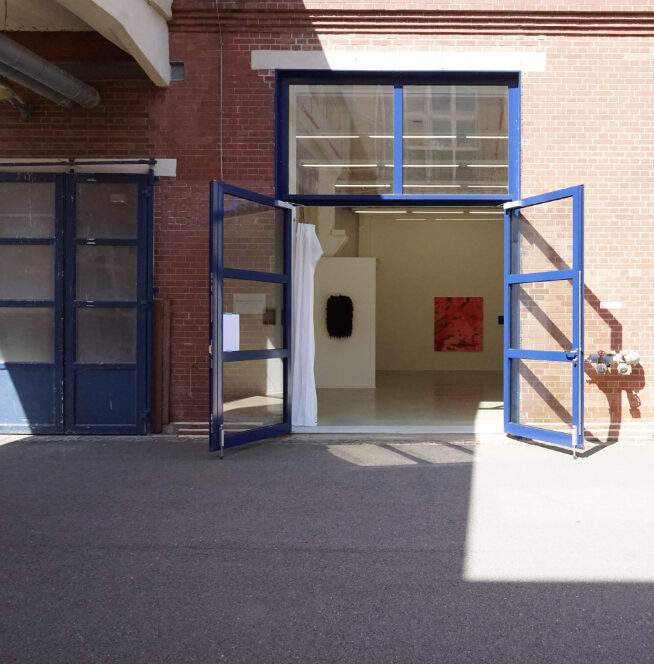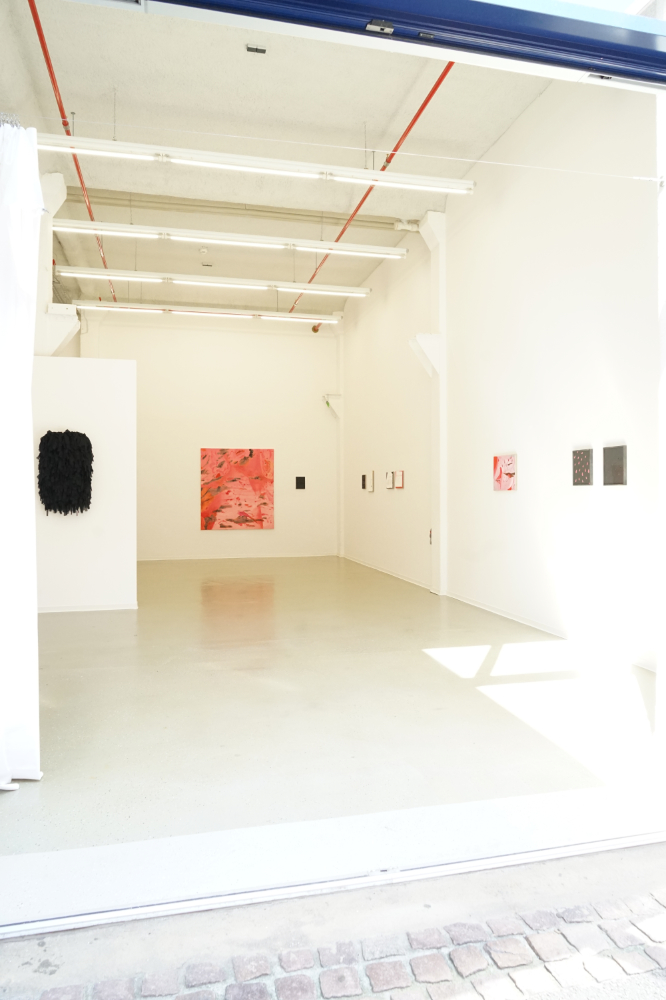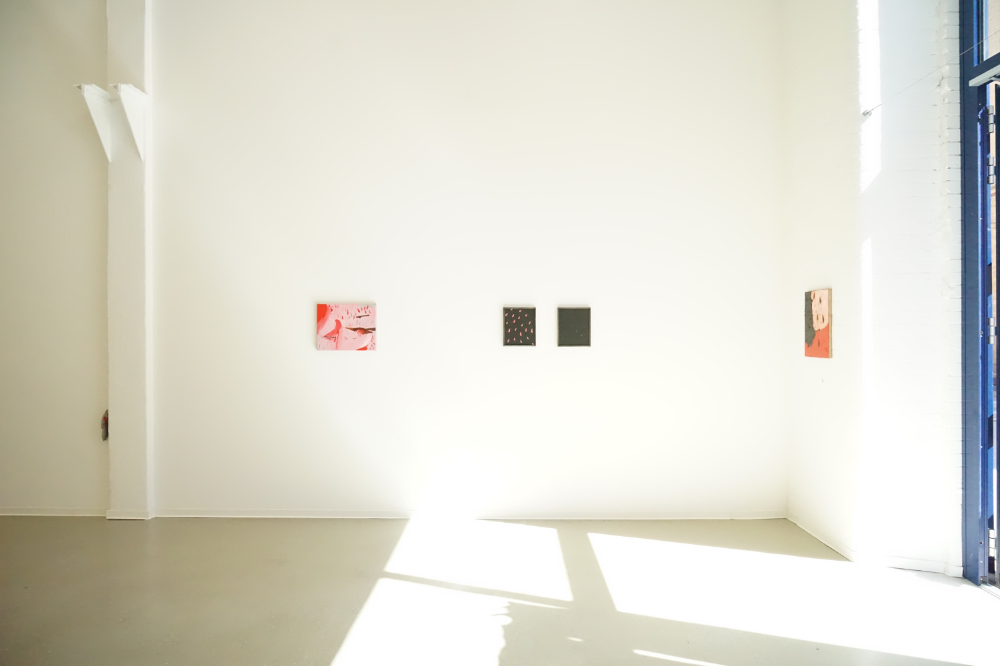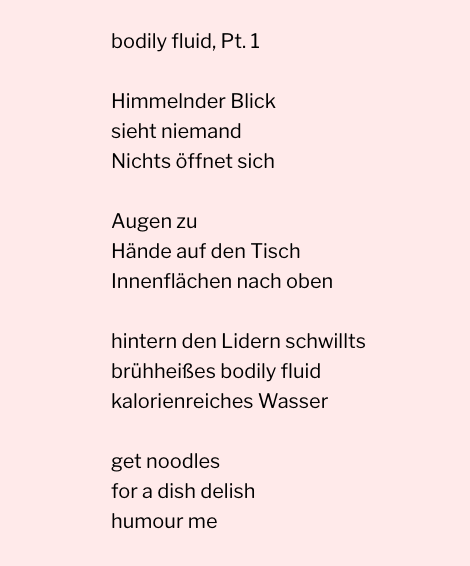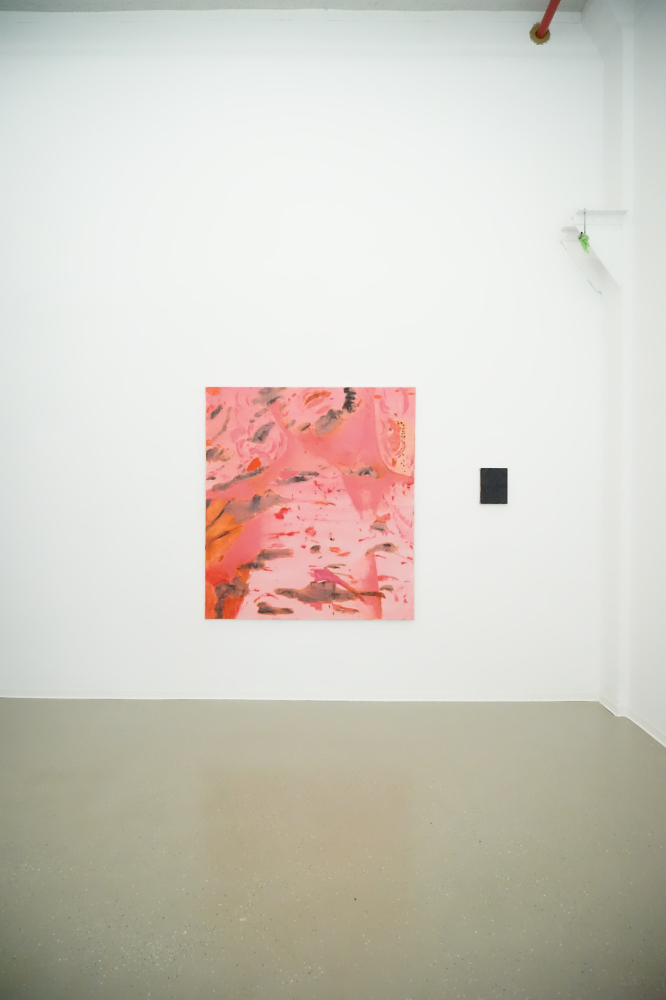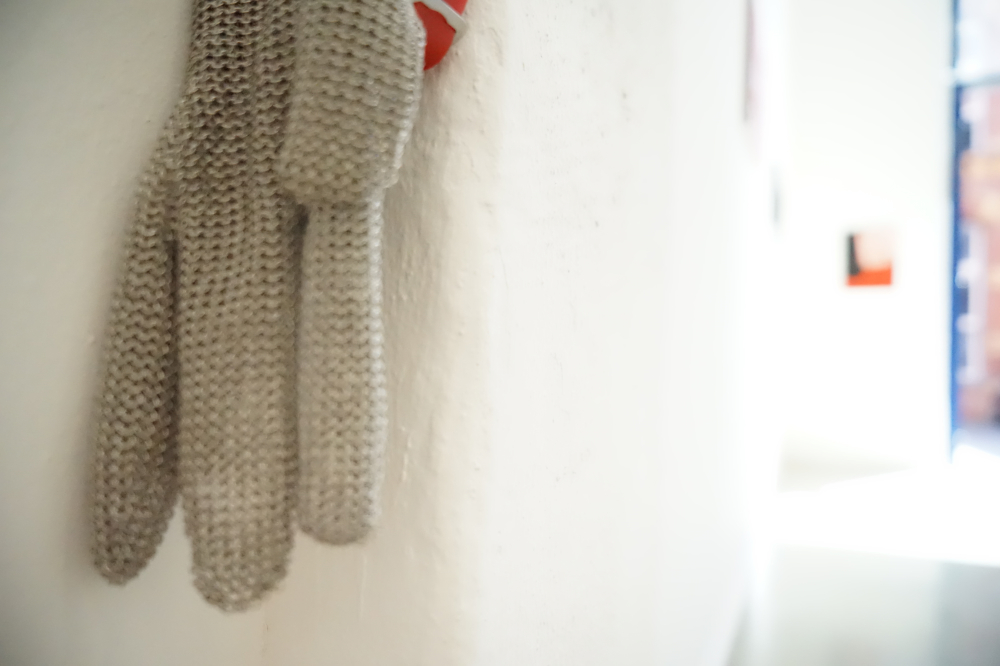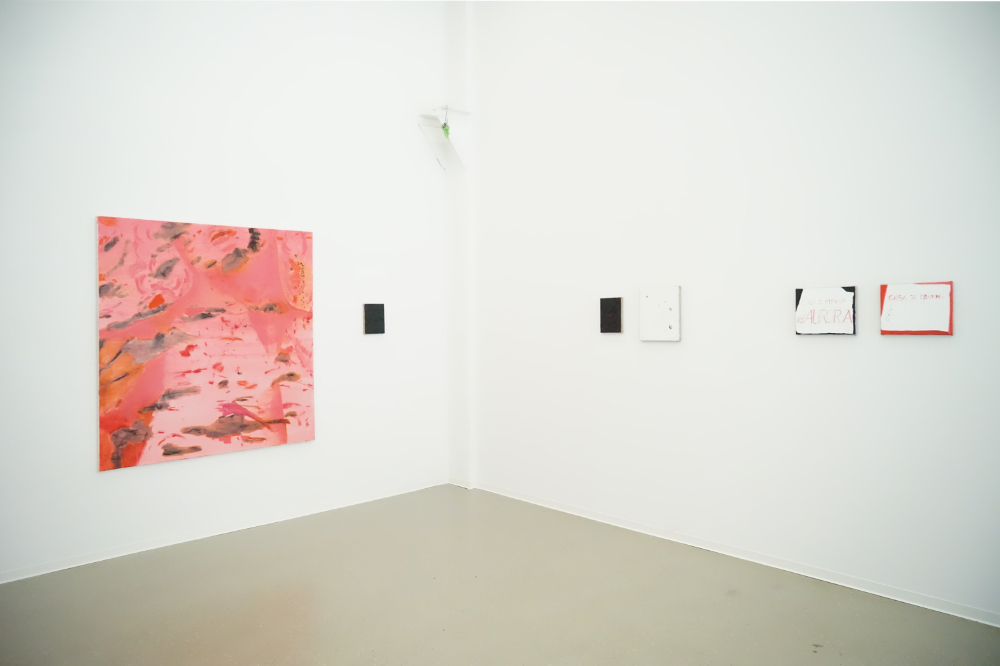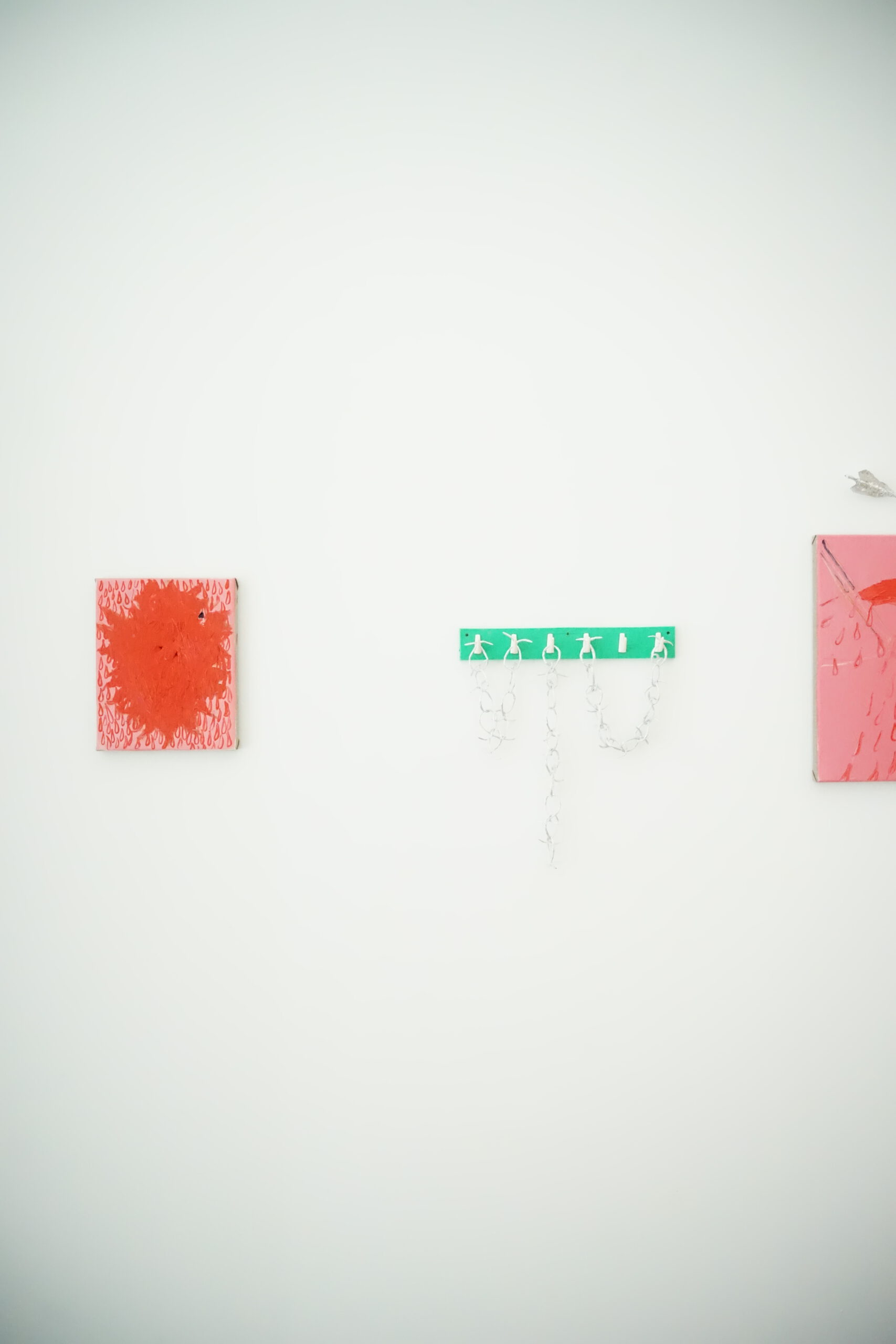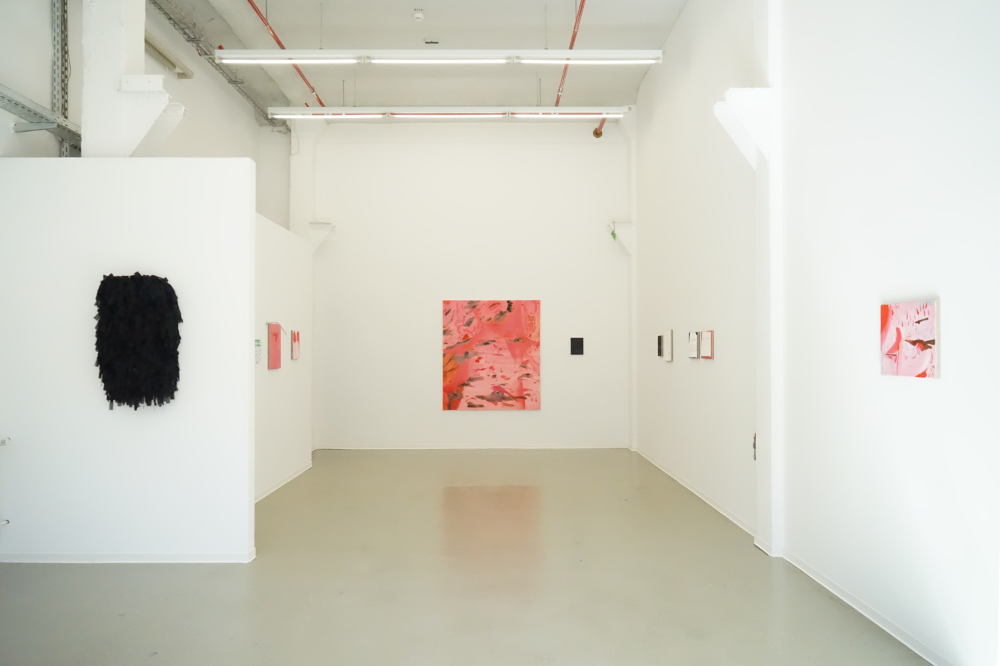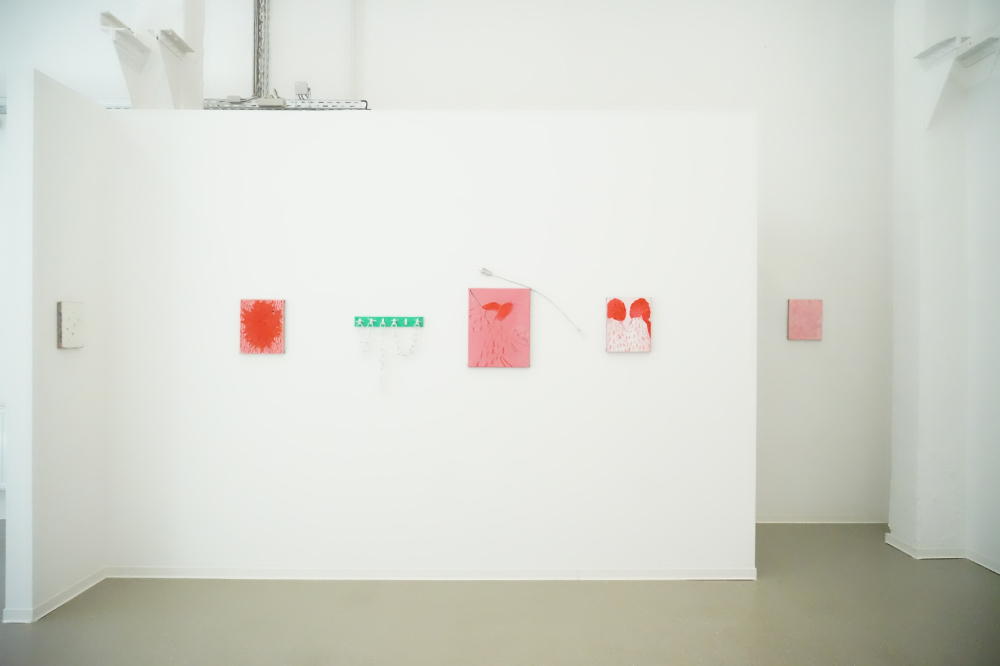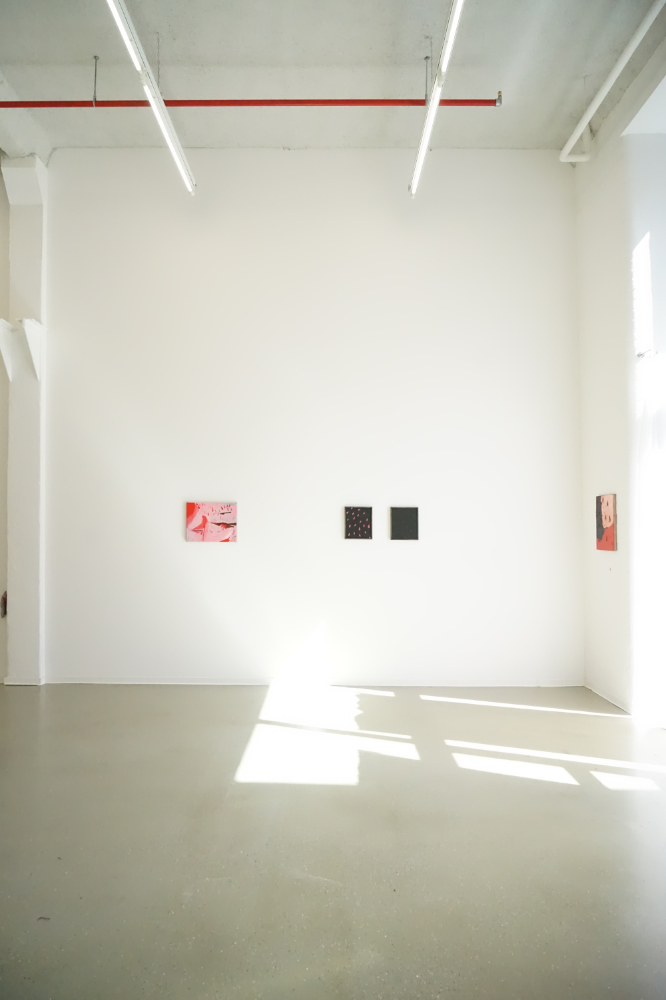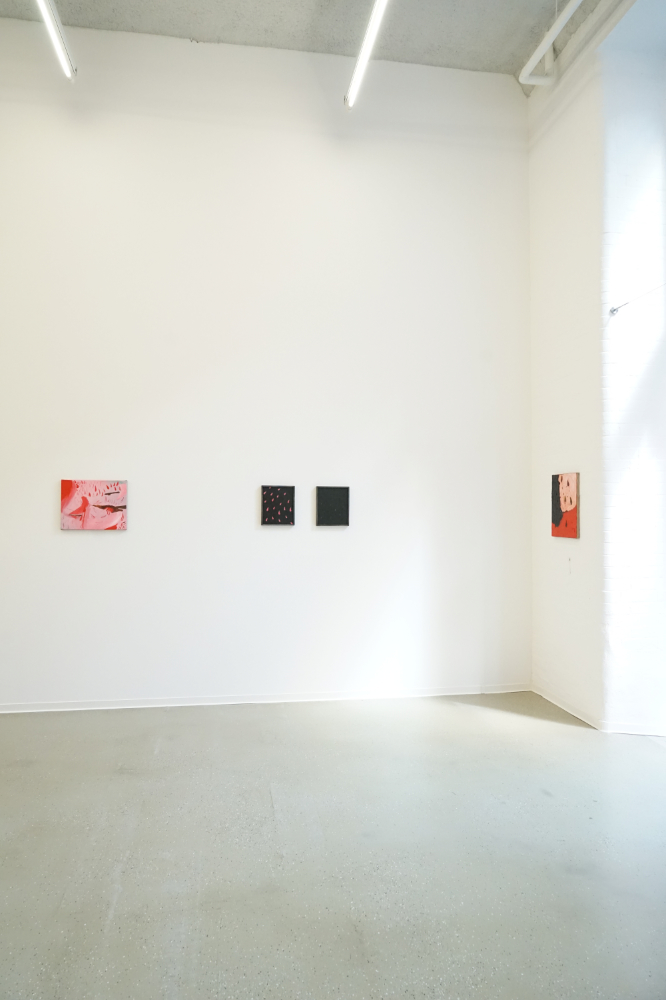heul doch
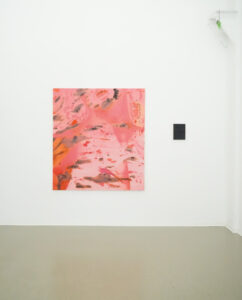
16. August – 20. September 2024
Galerie Borssenanger
_im Wirkbau Chemnitz
heul doch dreht sich um Wunden, Schmerz, Drama, funkelnd-fesselnde Ketten, gläserne Trauben und Tränen. Shit f**ck cry – um kurz dazu zu fluchen.
Bits und Bites – das triangolo, das den heul doch Raum aufspannt:
Betreten wir die den kompakten, klaren Raum stehen wir mit größtmöglicher Entfernung dem Bild ›Feuer unter die Haut laufen lassen‹ gegenüber.
Das Bild, ein Brustkastenportrait mit Pfeil in der rechten Brust, glüht. Der himmelnde Blick* wird im Bild nicht preisgegeben. Stattdessen ist es übersät von rosabräun-lichen, leuchtend orange ausufernden Farbflecken.
An Kinn und Kieferpartie sehen sie wie Bartbits aus. Andere scheinen dem Körper zu gehören, besonders das Schlüssel-bein zeigt sich als empfindsame, offene Stelle. Wieder
andere floaten über die Fläche wie Mouches volantes in den Augen, wenn der Blick beginnt sich zu trüben.
Ganz nah und vorn hängt ›dolore profondo‹ (tiefer Schmerz) ein – wieder brustkorbgroßes – Trauerobjekt. Zig Chiffon-schleifen verdichten sich zu angreifbarer Schwärze, kaum Gewicht und doch schwer.
Auf dem Weg an die große Wand begegnen wir rosarot schmerzenden Leibteilen, süßen Früchten und Tränen-wirbeln, himmlische und irdische. Trauben am Haken. Kleine, tränenlöchrige Bildteppiche, Drama und Relax auf der anderen Seite. Brilljant und purple rain weinen dürfen auf keinen Fall geschüttelt und gewendet werden, wie die Sandbilder aus den 90ern, da ist einfach nicht genug Raum.
Zurück zum triangolo:
Unbedingt ›dish delish‹ anschwärmen und lieben, die als ›Feuer unter die Haut laufen lassens‹ kühle Schwester beisteht, bevor das umspannende Raumdreieck mit ›everybodies darling‹ komplett wird. Das kleine Bild, schaut uns auf dem Weg hinaus an wie eine schmierige Tricolore aus Rotz, Wasser und dem zermatschten Zustand des Kopfes nach ausgiebigem Heulen. Wie bei den kleinen Tränenbildern, ist auch hier die Leinwand tränenförmig perforiert.
*den Wortlaut übernehme ich aus Andreas Hennings Text: Der›heilige Sebastian‹ von Antonello da Messina ein Kunststück der Renaissance, S. 15., aus: Antonello da Messina, Heiliger Sebastian, Hrsg.: Staatliche Kunstsammlungen Dresden, 2005
english translation below
heul doch is all about wounds, pain, drama, sparkling chains, glass grapes and tears. Shit f*ck cry – to curse briefly.
Bits and bites – the triangolo that opens up the heul doch room:
When we enter the compact, clear space, we are confronted with the painting ›letting fire run under the skin‹ at the greatest possible distance.
The picture, a chest portrait with an arrow in the right breast, glows. The heavenly gaze* is not revealed in the picture. Instead, it is scattered with pink-brownish, bright orange colour spots. They look like bits of beard on the chin and jawline. Others seem to belong to the body, with the collarbone in particular appearing as a sensitive, open area. Still others float across the surface like mouches volantes in the eyes when the gaze begins to cloud over.
Very close and in front hangs a ›dolore profondo‹ (deep pain) – again the size of a chest basket – an object of mourning. Tens of loops of chiffon condense into a touchable blackness, hardly any weight and yet heavy.
On the way to the big wall, we encounter aching pink body parts, sweet fruits and whirls of tears, heavenly and earthly. Grapes on a hook. Small, tearful tapestries, drama and relaxation on the other side. Brilljant and purple rain weeping must never be shaken and turned like the sand paintings from the 90s, there is simply not enough room.
Back to the triangolo:
Absolutely adore and love ›dish delish‹, which stands by as a ›letting fire run under the skin‹ cool sister before the encompassing space triangle is complete with ›everybodies darling‹. The little picture, looks at us on the way out like a greasy tricolour of snot, water and the squashed state of the head after extensive weeping. As with the small tear paintings, the canvas is perforated in the shape of a tear.
*Wording from Andreas Henning’s text: Der ‘heilige Sebastian’ …, p. 15, from: Antonello da Messina, Saint Sebastian, ed.: Staatliche Kunstsammlungen Dresden, 2005
